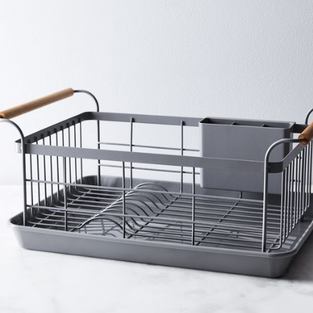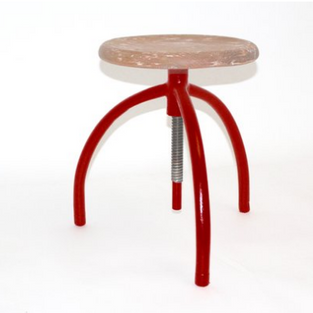Margarethe Schutte-Lihotzky. Pioneer. Architect. Spy.
- tipsy modernist
- Jan 22, 2021
- 6 min read

Margarete Schutte-Lizhotsky. Pioneer. Architect. Spy.
Eighty years ago today architect Margarete Schutte-Lihotzky was arrested by the Gestapo at Cafe Victoria in Vienna. She was meeting a fellow member of the Austrian communist resistance to help re-build their underground network. She and her fellow conspirator Erwin Puschmann were taken to Nazi headquarters at the Hotel Metropole on Morzinplatz and interrogated. She was sentenced to fifteen years in the notorious Nazi prison in Aichach, in Bavaria; her male co-conspirators, including Puschmann were executed. On April 29th, 1945 she was liberated by American soldiers. Grete (as she was known) returned to Vienna expecting to resume her brilliant architectural career. Ironically, her membership in the Austrian communist party had become a liability as Austria became embroiled in the Cold War. Instead of being greeted as a hero, Grete Schutte-Lihotzky was effectively black listed from any public project, which was the only work in Austria for many years. In 1980, her war time efforts and architectural legacy began to receive recognition and she was awarded the City of Vienna prize for Architecture. In 1985 she published her memoires of the war, on which the film “One Minute of Darkness Does Not Make US Blind” was based. She made headlines again in 1988 when she refused to be honored by the Austrian president Kurt Waldheim, due to his Nazi past. By the time she turned 100 in 1997, she was considered the Grand Old Lady of Austrian Architecture and danced with the mayor of Vienna in celebration. Despite all this, what Margarete Schutte Lihotzky is most famous for in this country, is the Frankfurter kitchen.

A Brilliant Beginning
Margarete Lihotzky was born in 1897 into a liberal,upper middle class family in Vienna. They encouraged her intellectual endeavors and instilled in her a moral imperative to help those less fortunate. She was the first woman to study architecture at the University of Applied Art in Vienna, where she was already interested in designing affordable homes and interiors for the middle and working class, rather than for the ”wealthy few”. By 1919 she had racked up awards for her modern kitchen design from Viennese manufacturer Lobmeyer. Upon graduating she worked alongside Adolf Loos on an ambitious government program to create affordable middle class housing in Vienna. While working on these projects she met German architect and urban planner Ernst May, who recruited her for his dream team to design 15,000 apartments in Frankfurt. In 1926 she moved to Frankfurt. Known as “May’s Brigade” the team included Walter Gropius, Adolf Meyer, Bruno Taut and Mart Stam. It was during her tenure in Frankfurt that she designed the now famous Frankfurter Kitchen. (More on the Frankfurter kitchen and its influence on kitchen design coming up) In 1927 she married fellow architect, Erwin Schutte. Margarete helped to design schools, kindergartens, and student housing as part of the city’s development plan. However in 1930, she became a victim of the Nazi purge of women in the work place, and was forced to resign from May's urban design studio.


International Woman of Mystery
When Ernst May was offered a position in Russia, it made perfect sense for Grete, a fervent communist, and her husband to follow him. For a brief period they were very successful working on massive urban design projects all over Russia. But by 1937 they were forced to leave Russia, as it too had succumbed to totalitarianism under Stalin. In 1938 they landed in Istanbul, which had become a refuge for Europeans fleeing Fascism and Russians fleeing Stalin. They both found jobs at the Fine Art Academy alongside Bruno Taut. In 1940 the communist Austrian resistance in Istanbul desperately needed an agent in Vienna to help re-build their underground network and they asked Grete. She said yes.
After enduring four years in a prison camp, she returned to a very different Vienna. Not surprisingly, her marriage did not survive, and she and Erwin Schutte divorced in 1950. Although she worked as an architectural consultant for many Eastern Bloc countries her career as an architect in Austria was effectively over, due to her being black listed for her communist ties. Throughout the sixties and seventies she remained active in politics, as the president of the Austrian Federation of Democratic Women, and served on several boards including the Austrian organization of victims of the Nazism and Fascism. She died at the age of 103, just a few days short of her birthday (on January 24th) in 2000.
So what made the Frankfurter kitchen so famous?
The Frankfurter kitchen was the first kitchen designed for mass manufacturing and the first kitchen to use standardization. The kitchens were designed as part of fifteen thousand new units of affordable housing meant for working class families and war refugees. They needed to be designed out of inexpensive, available materials that could be affordably manufactured on a massive scale. The design standards created for these kitchens are still in use today. Prior to the Frankfurter kitchen, there were no design standards. In the 1920’s kitchens were just an empty room with a sink. Apartment dwellers had to buy their own kitchen cabinets and often their own coal stoves. But equally important, Margarete Schutte-Lihotzky envisioned a future in which women could have careers if they chose, as well as being home makers, and she believed that good design could help women achieve that goal. Although she based her design on the scientific studies of time efficiency, and the burgeoning field of home economics, she designed the Frankfurter kitchen for a working housewife.
The Details
Every Frankfurter kitchen was outfitted with a gas stove, a dish drying rack above a built-in sink, lots of storage and countertops, even an ironing board. The storage was highly organized with built-in containers for flour, baking supplies, bread etc. This hardly sounds revolutionary to us in 2021, but in 1921, kitchen countertops did not exist in working class homes and the kitchen furniture that people were able to buy came in varying heights. Prior to the Frankfurter kitchen there was no standard countertop height or standards for anything except for the coal stove.

Frankfurter cabinets were manufactured of painted metal rather than the typical wood cabinets available, which became warped and stained overtime. There was a tile backsplash at the sink and tile floors, also never seen before in most apartments. And all this was packed into a 13 foot by seven feet space, with a window, in what we now call a galley kitchen. It was also designed (but not necessarily built) to open onto the living room so that women could watch their children as they worked in the kitchen. Although widely advertised at the time as “designed by a woman for women” later in life Margarethe noted that when she designed it, she was fresh out of school and knew nothing about cooking or running a household.

The beginnings of Kitchen Design
Now that the kitchen has become the focal point of most homes, it’s hard to imagine a time when working-class homes and apartments didn’t have one. Until the twentieth century, it was only the wealthy who had kitchens, run by a staff of servants. For the average apartment dweller, there was no separate room for cooking and eating and no kitchen cabinets or storage of any sort. Running water arrived in kitchens in the nineteenth century and electricity and gas arrived around the turn of the twentieth century.
In 1843 Catherine Beecher was perhaps the first person to write a comprehensive guide to kitchen design, called, A Treatise on Domestic Economy For Ladies At Home and at School. It didn’t really gain any traction-not surprising with that title. It did however make it into the hands of Christine Frederick, a home maker and women’s rights advocate in New York. She was also interested in the work of industrial engineer and efficiency expert Frederick Taylor. Through her own experiments she developed a streamlined methodology for kitchen work and design which she wrote about in a column called “ New Housekeeping” for the Ladies Home Journal. The column was a hit and eventually was made into a book.That book was translated into German and eventually made its way into Margarete Schutte-Lihotzky’s hands.

Evolution of the Modular Kitchen Kitchen design has since become a huge and lucrative industry. In 1892 a young cabinet maker named Friedemir Poggenpohl began producing wooden kitchen furniture. Influenced by the success of the Frankfurter kitchen, the company evolved from kitchen furniture to what we now understand as modular kitchen design, with cabinets all having a uniform height and depth etc. In 1928 they produced the “ reform kitchen” which was a white lacquer modernist aesthetic very similar to the metal painted Frankfurter kitchen. Amazingly Poggenpohl managed to survive WWII and still exists today as one of the top luxury modular kitchen manufacturers. Following the success of Poggenpohl other European and American cabinet makers began to produce standardized modular kitchens for the middle class. And now a "modern" kitchen is considered a standard component of even the most basic apartment. So the next time you’re drinking and chatting at your kitchen counter that is exactly 36” tall, take a second to toast Catherine Beecher, Christine Fredericks and Margarete Schutte-Lihotzky.
Thirsty for More? Get the perfect cocktail pairing here.
Frankfurter Your Own Kitchen
Looking For Your Own Frankfurter Kitchen? Look No further! Opening bids at 1st Dibs start at $47,000.

















Very interesting article!